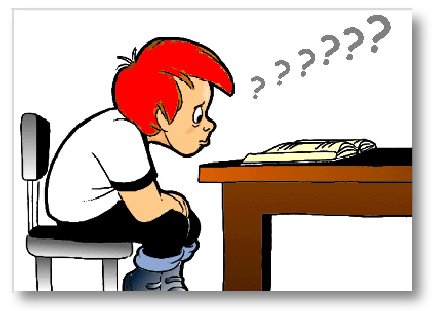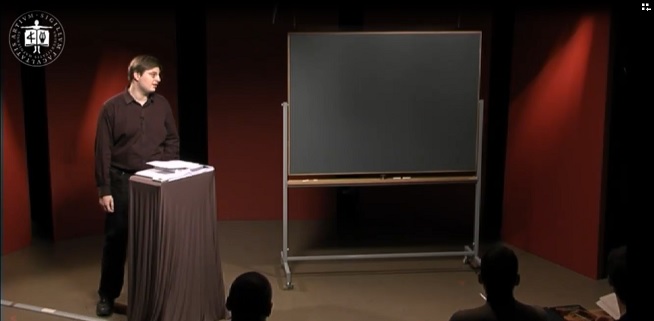In partial co-ordination with Indo-European Studies at the University of Copenhagen, the research centre Roots of Europe – Language, Culture and Migrations has, for quite some years now, applied modern technology to our teaching and dissemination activities: we have streamed and podcast many of our guest lectures, block seminars and conferences, and we have experimented with different setups in our regular teaching. You may view our efforts at the Roots of Europe streaming and podcast portal.
As a result of these efforts of ours, I was so fortunate as to be invited to speak at the conference Make a difference – teach and learn with technology, held at the University of Copenhagen about a week ago. In my own presentation, I shared my experiences with on-line learning, blended learning and the flipped classroom, gained by teaching at Indo-European Studies, but I also had the chance to get inspiration from other speakers. This is how I came to think of some far-reaching potentials of this kind of teaching to the field of language history, in general.
However, before I share my thoughts with you, I will provide you with the (unedited)manuscript of my presentation so that you may better follow my line of reasoning.
Manuscript for my presentation at the Make a difference conference
Introduction
During the last four years, I have used online and blended learning in a variety of ways of which the flipped classroom is only one. Today, I would like to share three of my experiences with you in order to demonstrate how different types of online and blended learning may support different teaching scenarios. At the same time, these case studies are meant to show how one thing can suddenly lead to another.
Scenario 1: Streaming and podcast
Back in 2010, I was to teach a course on the history of the Gothic language – that is a mandatory course on the BA of Indo-European Studies – and I was informed that one of my students was physically located in Ukraine from where she had decided to do self-studies only to show up in Copenhagen for the exam. The first thing that came to my mind when I learned this was: “Isn’t there a better solution?” I decided to have the course recorded so that she could watch the lessons on her computer in Ukraine, but the ITMEDIA department convinced me that we should not only record it but also broadcast – or stream – it live on the internet for everybody to follow. It was an interactive setup in that the students could not only watch me lecturing, they could also ask questions and participate in discussions by means of tweets.
Back in 2010, the setup might have been somewhat primitive, but I reused the general concept in 2012 when the curse was to be taught again. This time, the setup had improved drastically. For instance, the lessons were recorded in a real TV studio, and we even got the opportunity to test run the oral exam as a video conference session on Skype.
Both the students and I really benefited from this general concept. The students enjoyed the high level of flexibility. For example, students who had turned ill didn’t have to leave their bed if they didn’t want to miss the lessons, they could just turn on their computer at home. The same goes, of course, for students who are abroad or otherwise not present. We even had a student following a lesson and tweeting from a Wi-Fi equipped bus on an Israeli highway as this video clip shows.
When this concept really proves valuable, the students have told me, is when they had to prepare for the exam and they could watch or re-watch the entire course to fill in the gaps they might have in their knowledge.
For me as a teacher, the greatest benefit has been, without doubt, that I’ve been able to watch my own teaching and therefore to reflect on my general appearance, such as my body language and unclear wordings. Well, I simply dare to believe that I have become a better communicator this way. Also, I have experienced what you might call an unexpected bonus effect of the setup, namely in-lesson as well as post-lesson interaction with peers from all around the world, for instance with a fellow Indo-Europeanist from Germany who happened to be watching… or with whichever colleague I had called for help on a specific matter as you’ll see in this video clip. This kind of peer-to-peer interaction, especially of course when happening during the lesson, greatly enhances the chances of us, the teachers, delivering true research based education to our students.
Scenario 2: Flipping the classroom
The last time I taught Gothic – last spring, that is – the setup was a little different. We didn’t live-stream and podcast the lessons. Instead, partly because of a cut in the number of hours allotted to the course, and partly because I wished to include the students more actively in the class, we implemented what is normally referred to as flipped classroom… meaning that we swapped the activities normally done in class, that is lecturing by the teacher, and those normally done outside class, that is exercises. I chose to let the videos from 2012 constitute a part of the students’ preparation before class. In that way, we didn’t have to spend most part of the highly valued student-teacher time on lectures on theoretical stuff. Instead we could focus on clarifying questions, exercises and student presentations, thereby training their competence as a communicator and their ability to apply the knowledge and understanding gained from the video clips on concrete text examples for analysing them linguistically.
Normally, a lesson would start by me asking the students if they had understood the lecture podcast and the literature belonging to it. Afterwards, one or two students would present orally on a theoretical subject selected by me, and in the last half of the lesson, we’d make and go through some exercises in which the students were to apply the theory they’d just learned on concrete linguistic material from the Gothic language or from its precursors. By means of the plenary walkthrough of the exercises, I could see right away if the students had learned what they were supposed to learn. And if they hadn’t, we could react on it immediately.
In more general terms, our use of flipped classroom implied that we had much more time for focusing on the entire package of intended learning outcomes which, of course, doesn’t only consist of knowledge and understanding but also of analytic and interpretative skills. In other ways, we had created a learning environment with a high level of constructive alignment in terms of outcomes based teaching and learning – in the exact way that Biggs & Tang – and others – have suggested to be ideal for teaching at the institutions of higher education.
It’s important for me to stress here that, if you want to flip your classroom, you don’t need to have such fancy videos made in a TV studio as I had. You can easily make your own videos. All you need is a webcam, a microphone and some software for recording. Personally, I prefer the video conferencing tool Adobe Connect. In Adobe Connect, you can, for instance, record yourself while you are going through a PowerPoint lecture. It’s no less than brilliant for the purpose!
Scenario 3: “Traditional” streaming and podcast of the lessons combined with video conferencing
This semester I am, again, using technology in my teaching… and actually even in the form of Adobe Connect. In the new elective course Roots of Europe, we try to uncover the prehistory of Europe from a cross-disciplinary perspective – that is by means of contributions from historical linguistics, science of religion, archaeology and population genetics. In order for us to gain access to the best and world-leading experts within these fields, we’ve set up the course as a video conference with one of the participants being the physical lecture hall here in Copenhagen. As such, the class is in principle gathered in a lecture hall, but the teachers may either be physically present in the room or only virtually present on a big screen by means of Adobe Connect, this video conferencing tool.
At Indo-European Studies in Copenhagen, our expertise is historical linguistics. We don’t know that much about, say, archaeology and genetics, and therefore we need to draw on experts from elsewhere in order to get access to the most updated and research-based knowledge on the subject from these perspectives. For instance, we had the world famous archaeologist David Anthony teach a lesson live from his office in Oneonta, New York to our students in the lecture hall here in Copenhagen, as you can see from this video clip. I feel quite convinced that we couldn’t have him lecture, had we not had this video conference setup. I suppose that my department wouldn’t have been willing to pay for his travel and accommodation, and he probably wouldn’t have had the time to do two transatlantic flight trips only to give a three-hour lecture in Copenhagen.
A further advantage of this setup is that it also resembles the traditional streaming/podcast scenario – my scenario number 1, that is – in that the video conference sessions are being recorded so that the students can watch or re-watch the lessons whenever they want.
Conclusion
With these examples of how different types of online and blended learning may support different teaching scenarios and how one type of online and blended learning can suddenly lead to another, I’ll pass the word to my co-presenter Rikke Langebæk.
Thank you for your attention.
Now, back to those new lines of thought mentioned in the beginning of this post! To all these positive benefits we may add a new one: the possibility of spreading the knowledge of language history beyond the academic world. Many of the teaching methods which I described in my presentation may open up for the inclusion of a wider public to the lectures – a fact most relevant to the field of Indo-European Studies, seeing that it is generally taught at so few institutions around the world, meaning in turn that physical barriers risk preventing us, the comparative linguists, from mediating our knowledge to those interested. When knowledge of language history starts becoming available regardless of time and space, we can more easily reach this target group.
But why stop here? Why not apply knowledge of language history to society in general? Here’s a good reason (or two) why we should definitely start (also) looking in that direction.
How modern-day society may benefit from knowledge of language history
Languages change all the time; their written representations, however, do not necessarily do so. Consequently, speakers of languages whose writing and spelling systems are characterised by a high level of conservatism and tradition may have a hard time learning how to make the proper connection between the spoken and the written language. Even for languages that do not face that potential problem, the first part of the general, historical linguistic paradox described by Sturtevant still holds true, i.e. that “[p]honetic laws are regular but produce irregularity” or, in other words, that irregularities in contemporaneous languages may have arisen as a consequence of regular sound developments from an earlier, more systematic stage of these languages. In both cases, it seems evident that a basic understanding of the history and development of a given language may facilitate the language users’ understanding of the contemporaneous situation.
Surprisingly, not much has been said and written on the ways in which knowledge of language history may benefit modern day society. The reason for that may be the general tendency in society that knowledge of language history and historical linguistics is regarded as, if not superfluous, then at least highly niche-specific and difficult to access and comprehend. Consequently, the methods of contemporaneous language teaching generally pay little attention to the possibility that, as multiple studies have indicated (e.g. Orton 1937, Gilligham & Stillman 1956 and Henry 1988, 1993 etc.), a basic knowledge of the history of a given language may have a positive impact on modern day society in that it may facilitate also non-linguists’ understanding and command of that language. And as for the part about knowledge of language history being difficult to access, the use of modern technology in the dissemination process may, however, completely change that picture.
One way to make knowledge of language history accessible to the public is by introducing it to school children learning how to read (decode) and write (spell) their mother tongue. Concretely, I would speculate if a combination of printed material in an easily accessible language, instruction videos to be used in a flipped-classroom scenario and an online language history teaching and gaming portal modelled on the highly educational examples of the VISL Grammar Game http://beta.visl.sdu.dk/games_gym.html and the spoken-language game SNAK at http://snakspillet.dk/ wouldn’t be a reasonable starting point. That is, of course, a hypothesis to be proved by actual testing.
 Provided that such a method of including knowledge of language history in language teaching would prove fruitful, language teachers would obtain a new means of introducing students to reading and writing that could be spread to schools and other educational institutions. Being as numerous as they are obvious, the benefits for modern-day society would thus include that the future prospects of students who are skilled readers and writers are greatly enhanced, e.g. as regards their ability to follow and complete programmes of middle- or high-level education.
Provided that such a method of including knowledge of language history in language teaching would prove fruitful, language teachers would obtain a new means of introducing students to reading and writing that could be spread to schools and other educational institutions. Being as numerous as they are obvious, the benefits for modern-day society would thus include that the future prospects of students who are skilled readers and writers are greatly enhanced, e.g. as regards their ability to follow and complete programmes of middle- or high-level education.
As far as I can see, there is no real reason not to begin considering how we can, by use of modern technology in the teaching and dissemination situation, spread (aspects of) our knowledge on language history to the rest of the society.
References
Gillingham, A. & B.W. Stillman. 1956. Remedial Training for Children with Specific Disability in Reading, Spelling and Penmanship. 5th ed. Cambridge, MA: Educators Publishing Service.
Henry, M.K. 1988. Beyond Phonics: Integrated Decoding and Spelling Instruction Based on Word Origin and Structure. Annals of Dyslexia 38, pp. 258-275.
Henry, M.K. 1993. Morphological structure: Latin and Greek roots and affixes as upper grade code strategies. Reading and Writing: An Interdisciplinary Journal 5, pp. 227-241.
Orton, S.T. 1937. Reading, Writing and Speech Problems in Children. New York: W.W. Norton.
[Originally posted on 19 November 2014; re-posted due to technical difficulties with the original link on 8 April 2015].

